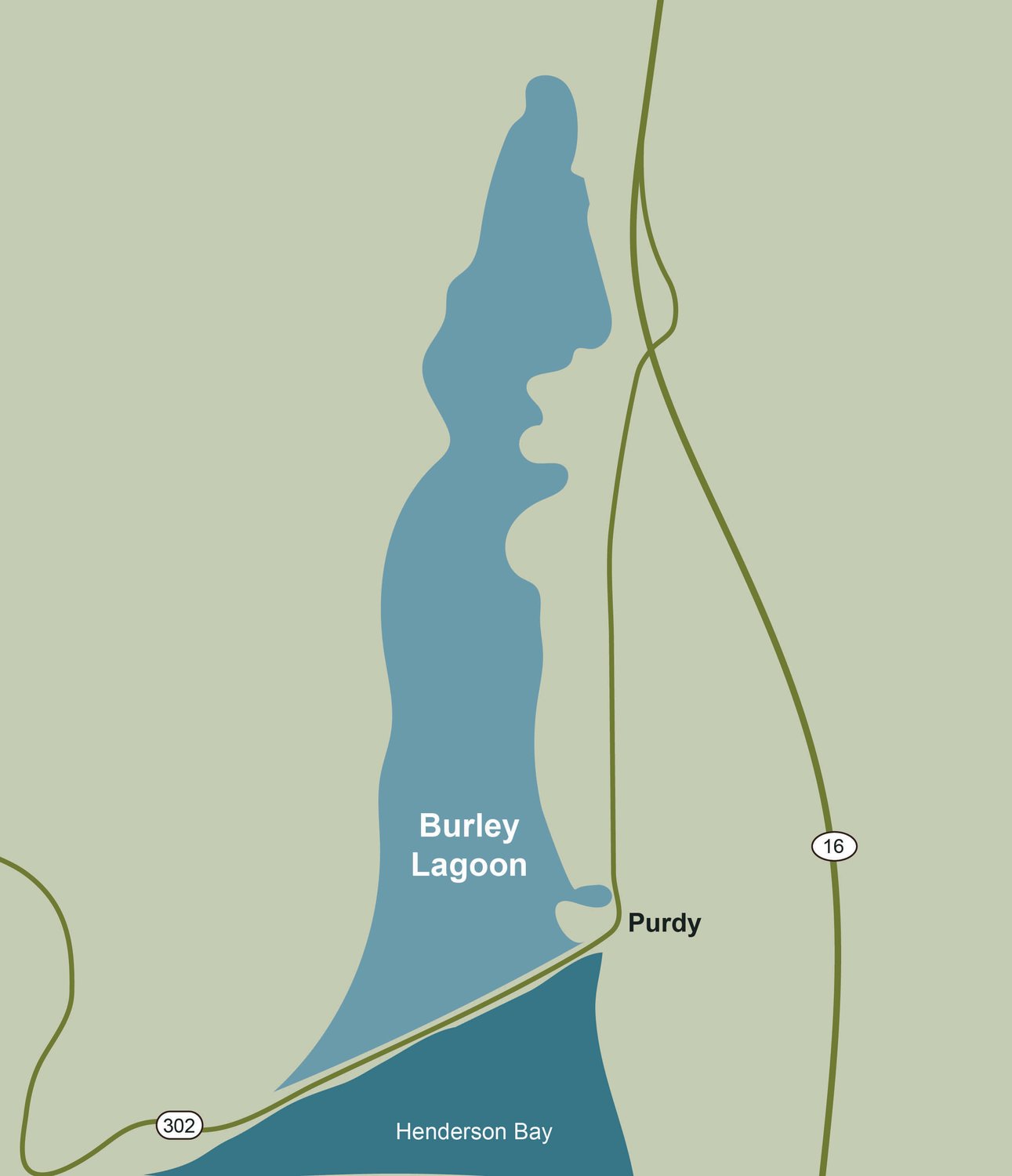
Residents of Burley Lagoon reported a stench in mid to late August that reminded some of the clam die-off on Rocky Bay last summer (“Rocky Bay Algae Bloom Suspected in Clam Die-Off,” KP News, Aug. 2019). The Taylor Shellfish Co., which raises oysters and clams in the lagoon, responded to their concerns.
Taylor Shellfish Vice President Bill Taylor and the farm manager visited the site and submitted a report to Pierce County. They said that about two weeks prior to the smell of sulfur, one of the Burley Lagoon crew members had noticed a large algae bloom in the area, also confirmed by Washington Sea Grant staff.
Teri King, WSG aquaculture and marine water quality specialist, said the same bloom was seen in Carr Inlet. The microalga — or plankton — identified is not the organism responsible for the Rocky Bay die-off and is not toxic.
While walking the shoreline, Taylor and the farm manager did not see an unusual number of dead clams. They did observe locations, both on and off the shellfish farm and including netted and non-netted areas, that were coated with mats of dead and decaying algae. They also saw splotches of white, associated with Beggiatoa, a type of bacteria that lives in fresh and marine water and grows in low-oxygen environments. It
breaks down dead algae and oxidizes sulfur, which releases a smell like rotten eggs.
“Clams are stressed and surfacing but it has not been a mortality event,” said Erin
Ewald, Taylor Shellfish director of regulatory affairs. Taylor Shellfish continues to monitor the lagoon.
WSG funds marine research and works to advance regional understanding and sustainable use of ocean and coastal resources. Based at the University of Washington, it is part of a national network of colleges and institutions administered by the National Oceanic and Atmospheric Administration.
“South Sound is a nutrient-rich, oxygen-limited area in some of the bays and inlets. The key is to reduce nutrient flow that creates extended algae blooms,” King said.
Nitrogen is naturally occurring but can enter Puget Sound in high levels through stormwater runoff, failing septic systems and sewage treatment plants, and is the primary nutrient for algae. Increased levels can lead to massive blooms. When the algae die, as part of the natural cycle, they sink to the bottom. Bacteria then break down the algae and in the process use oxygen, driving down oxygen levels and potentially leading to dead zones. Good water flow can help with the low oxygen levels, but some parts of Puget Sound, including Hood Canal and Burley Lagoon, have limited flow.
King said that a strong wind can also help mix the water and improve oxygenation. “More shellfish and forage fish that consume algae could help the bay and help to keep the flux of nutrients and plankton in balance,” she said.
The county and state health departments monitor water quality, although Jan Frost, from the Washington State Department of Health Shellfish Program, said their emphasis is on bacterial coliform counts rather than toxins or algae. Burley Lagoon is one of three shellfish protection districts on the Key Peninsula. Their water protection team works to protect water quality and meets quarterly.
UNDERWRITTEN BY THE FUND FOR NONPROFIT NEWS (NEWSMATCH) AT THE MIAMI FOUNDATION, THE ANGEL GUILD, ADVERTISERS, DONORS AND PEOPLE WHO SUPPORT INDEPENDENT, NONPROFIT LOCAL NEWS